Your Drugstore Leave-In Conditioner Can Be So Much More
Discover the best affordable leave-in conditioners, according to hairstylists.

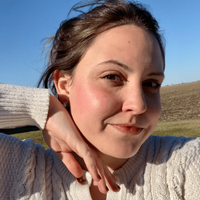
Think of leave-in conditioner as your hair's multitalented, overachieving best friend. Sure, you know someone (ie. your favorite conditioner) who makes your hair a little more moisturized, but do they also know how to tame frizz, battle dryness, and help with brittleness, breakage, and split ends? Do they support your styling endeavors and make your locks a little more manageable? Your leave-in does.
"A leave-in conditioner is a product used on towel-dried hair, post-wash, before you style, to deliver moisture. Leave-in conditioner's main job is to keep your hair hydrated and protected in between washes, but a good one will act as a detangler, styler, and damage shield, too—basically everything your hair needs to stay healthy in one bottle," shares Odele co-founder Lindsay Holden.
Kerry E. Yates, a trichologist and founder of Colour Collective, cosigns the product's multi-benefit label, adding that a good leave-in can also help hair that absorbs water or color product—and expels it—quickly. "Based on the type of leave-in conditioner, all hair types and textures could benefit from using leave-in conditioner when they feel they need more hair support," she notes.
But how do you find the leave-in that's right for you? That's the question...and we have the answer(s). "It’s essential to find products within your price range to build a consistent routine," says Kee Taylor, founder of Deeper Than Hair. "Some leave-in products can also protect against environmental damage like UV rays, harsh temperatures, and wind by strengthening the hair’s cuticle."
Ahead, everything you've ever wondered about leave-in conditioners, plus the best leave-in conditioners available at your local drugstore.
What to Look For in a Leave-In Conditioner
- Ingredients:Look for natural ingredients like water, proteins (such as keratin, wheat, silk, and rice), and oils (like argan, almond, and jojoba) to provide shine and softness. Yates suggests you avoid silicones, paraffins, and mineral oils, which can create a barrier preventing moisture balance."Avoid phthalates and parabens, because they can lead to other issues," adds Taylor. "Phthalates are used in many hair care formulas but have been linked to hormonal imbalances. Parabens are often used as preservatives in hair products, but they can cause scalp irritation and weaken the hair follicle, eventually leading to hair loss."
- Hair Type: You should always look for a product that caters to your hair type. Someone with thin, straight, or oily hair will likely have different leave-in conditioner needs than someone with thick, coily, or dry hair."Those with fine hair may find that conditioning products tend to weigh their hair down, so products like leave-in conditioners should be used sparingly, and only used throughout the mid-lengths to ends. Less is more for fine textures!" shares Taylor. "If your hair is slightly thicker, keep an eye on how your hair reacts to leave-in conditioners. Start with a dime-size amount; if that isn't enough, feel free to use more. "Thick or curly hair, on the other hand, require a lot of moisture. "These types of hair are more prone to tangling and dryness than others. Leave-in conditioners are perfect for these hair types, and you may need to use more than the recommended amount for incredibly thick or coarse textures. I recommend adding to your locks when wet for maximum absorption," she adds.
- Other Benefits: Besides aiding in hydration, a good leave-in can offer heat protection and UV protection."A leave-in conditioner, which we also often refer to as a detangler, is most commonly used as the first product out of the shower," notes hair designer Christina Hayes. "It helps create slip along your hair shaft to reduce friction and prevent breakage while you are brushing through your wet hair, when it is at its most fragile. A leave-in conditioner with thermal defense also adds an element of protection for when you blow dry your hair!"
The Best Drugstore Leave-In Conditioners
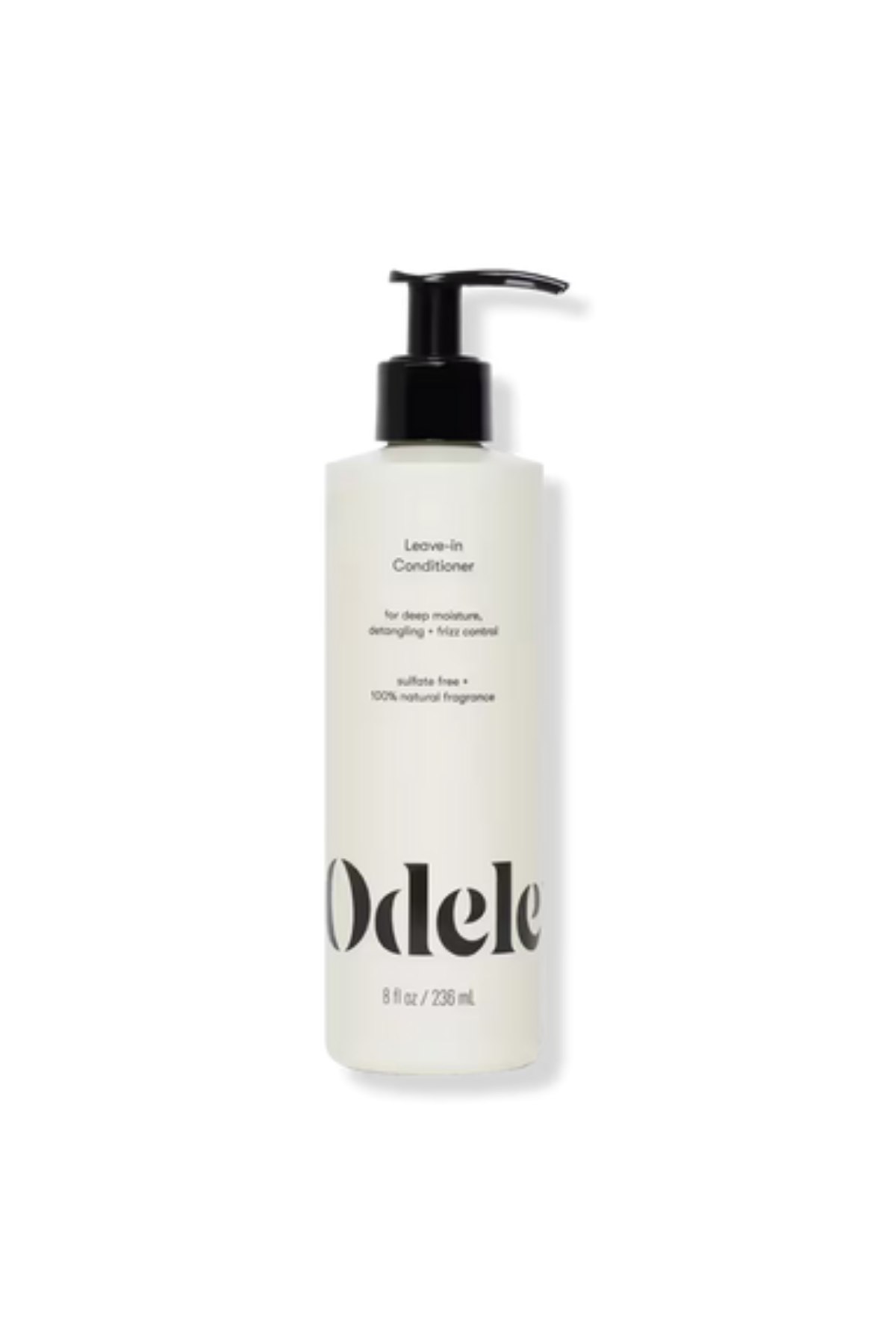
Disclaimer! Once upon a time I ghostwrote some blog posts for Odele through a different writing gig, but I have no affiliation with the brand/team. If anything, it was the universe's plan to get me to recognize and buy the product, and I'm glad I did. Odele's simply named Leave-In Conditioner is the first leave-in I ever loved—and for good reason. Light as a feather with a soft, non-overpowering smell, this product tackles frizz even when I feel like a human ball of static in the dryness of winter. I have fine, slightly wavy, uncolored hair (but a decent amount of it) and if anything, this product makes me feel like me, but better and more moisturized.
Pros: Light as air; Lovely, simple smell; Formulated for all hair types
Cons: None!
Customer Review: "I first want to say, I have tried just about all of the leave ins someone can get their hands on, this one is special. It's thin and lightweight, almost a gel consistency, and when I ran it in my hair it felt like nothing was going on which I like because while I have a lot of hair it's thin stranded so the lighter weight the better. Off the bat it smells divine, and is very hydrating. My hair was so silky smooth I was having a hard time keeping a hold on it, then you let it dry and my hair came alive y'all. It was smooth and silky, soft and shiny. This might be better than all of the more expensive ones combined." -Ulta

Hair expert Kee Taylor counts this Shea Moisture product among her very favorite leave-ins, noting that its scalp-loving properties make it a winner. “The raw shea butter penetrates not only the hair but the scalp as well–so it’s like two treatments in one! It also has sea kelp, which seals the hair cuticle, and argan oil, which helps to restore shine and elasticity," she notes.
Pros: Cares for the scalp; Intensely moisturizing
Cons: Some report their hair feeling oily
Customer Review: "This is a wonderful product. It does exactly what it says it will. The last time I went to my cosmetologist, she told me that my scalp in my hair is healthier than it has ever been. I would say that speaks for itself." -Amazon
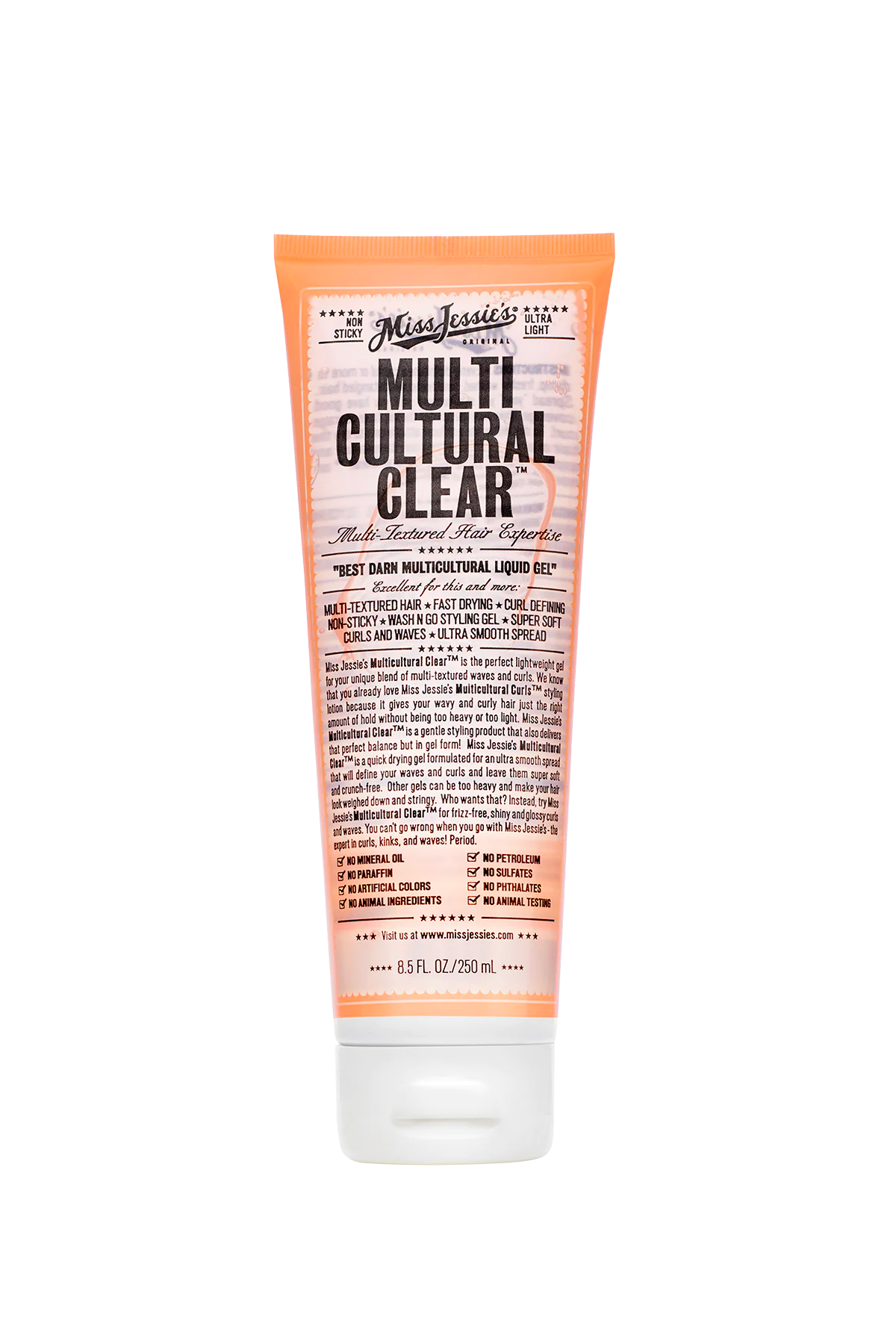
"The name of this product is what initially drew me to it, because I, like the name, am indeed multi-cultural. My mixed Puerto Rican and Middle Eastern heritage means that I have thin, dense, curly hair that's often weighed down by thick curl creams or dried out by lightweight products that aren't hydrating enough. Per the bottle, Miss Jessie's Multicultural Curls was formulated with girls like me in mind, providing robust moisture, medium hold (with no crunch!), and frizz control without weighing down hair at all. My hair always looks its best when I use this product, and it's a lifesaver when I haven't had time for a wash and need a bit of curl revival."—Gabrielle Ulubay, Beauty Writer
Pros: Editor-approved; Curl-defining; Frizz-taming
Cons: Might be too thick for thin hair
Customer Review: "AMAZING!!! I live in South Florida where there’s a ton of humidity and I could never really find anything that worked well for frizz and kept my hair movable and feeling soft. This is the product you need if you live in a humid place. I use it while my hair is damp and when it dries it’s controlled and shiny. It doesn’t add volume which I like but if I want to add a little puff to my hair I just fluff it with my hands after it’s dry and this product still holds my hair in place. Absolutely incredible!!! Also, the tube is big so it will last a long time even with daily use. Buy it!" -Target

The hair world is all about shine right now. Commercial-ready, glossy, straight from the salon shine. So why not grab a leave-in that can help with that, too? Kristin Ess's Weightless Shine Leave-In Conditioner Spray features an incredibly light, thin formula to help you evenly coat those strands. What's more? Hayes count it among her favorite leave-ins , noting that it's particularly great for straight to wavy hair.
Pros: Provides shine; Formulated for all hair types
Cons: Strong smell
Customer Review: "Kristin Ess's Leave-In Hair Conditioner is a haircare gem. The lightweight formula is a game-changer for managing and nourishing my hair without any residue. It effortlessly detangles, leaving my hair smooth and easy to style. The conditioner adds a touch of hydration without weighing down my locks, making it perfect for daily use. The subtle fragrance is delightful, and it lingers throughout the day. I've noticed improved softness and shine since incorporating this product into my routine. Overall, a fantastic leave-in conditioner that delivers on its promises and has become a staple in my haircare routine." -Ulta
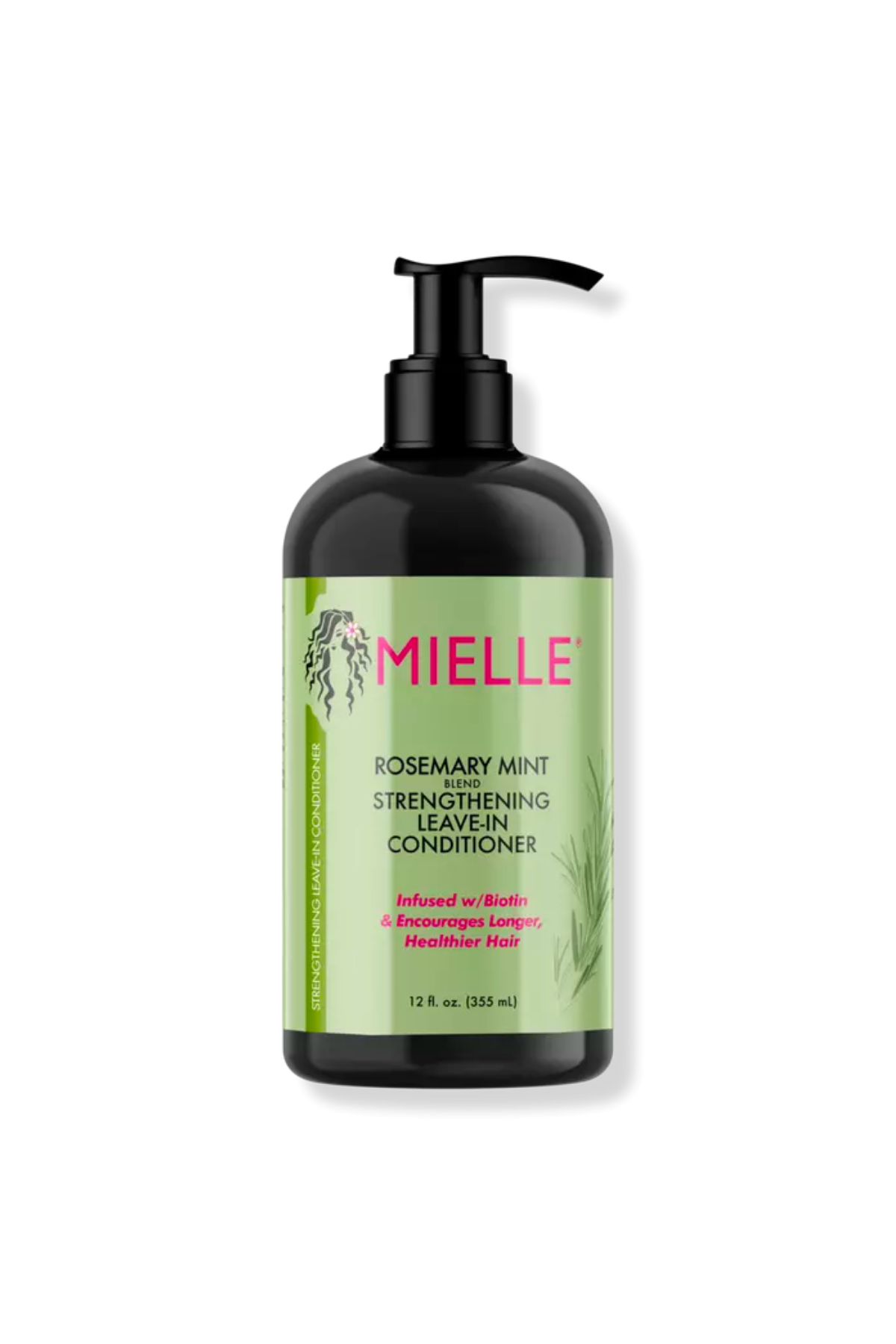
"Mielle has infused this mask with biotin (Vitamin B7), which helps maintain hair growth and prevent dandruff," shares Taylor. The Rosemary Mint Strengthening Leave-in Conditioner promises major shine, with many reporting their hair feels stronger and thicker with continued use. To use, simply apply a generous amount to hair and work through with your desired detangling tool.
Pros: Strengthening; Moisturizing
Cons: Some report a slight residue after use
Customer Review: "This conditioner is amazing! I had my hair relaxed and colored after the relaxer, I decided that I was gonna go back natural. I got my hair done with the relaxer, color and also added extensions with glue. When taking the extensions out my hair was packed with the glue. I had my daughter use my leave in conditioner and I put my silk bonnet on and let it sit for days. My purpose of doing that was in hopes of doing that, when I wash my hair the clue will slip right out! Sis! I washed my hair with the rosemary mint shampoo and then we used the oats and honey soothing conditioner and Not only did the glue slip out BUT my hair is extremely curly. It was like I never got my hair relaxed! Needless to say this will forever be my go to product for my hair. My curls were so beautiful I could not believe it. I'm excited to see the growth and strength my hair has after using this consistently." -Ulta
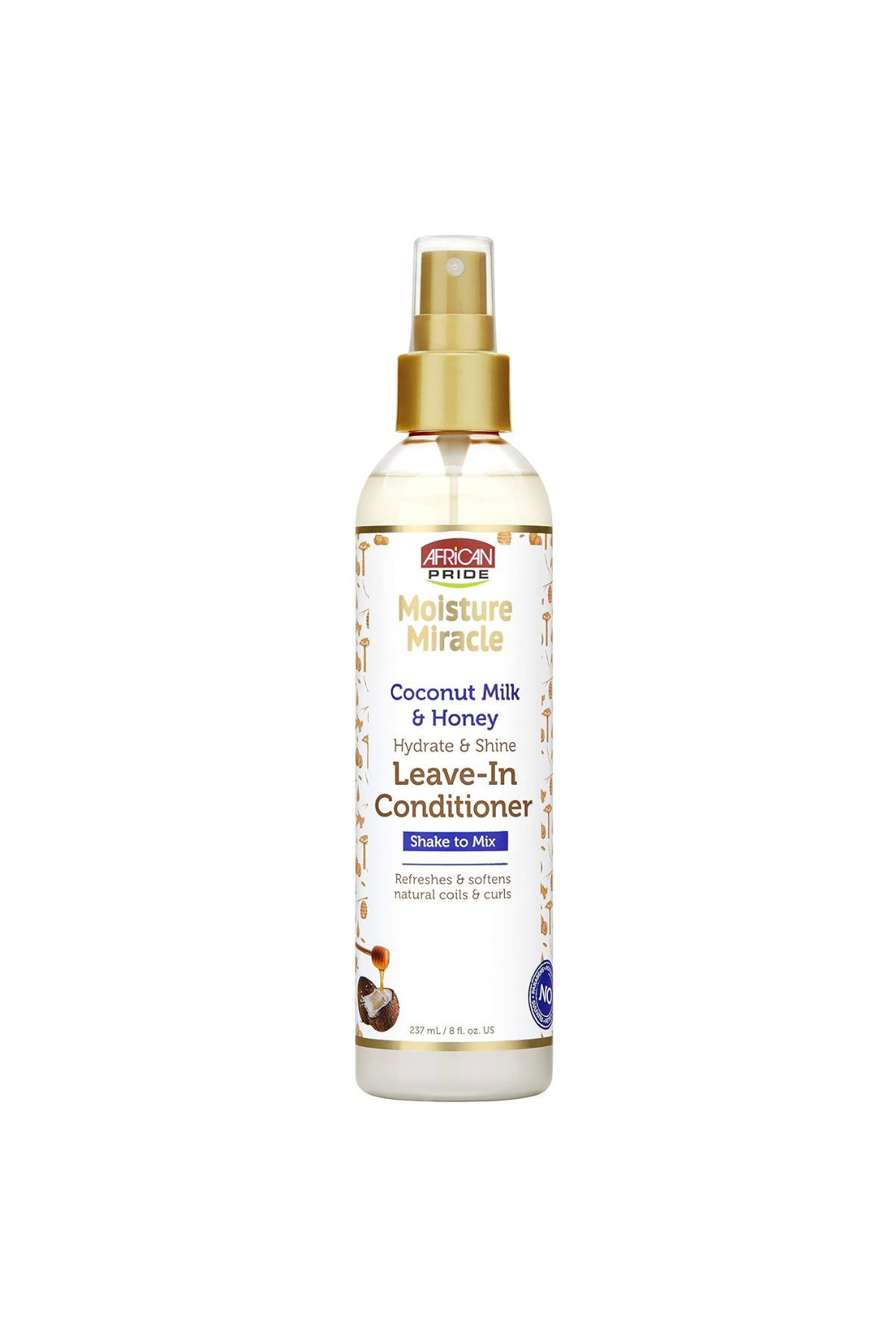
"African Pride’s leave-in conditioner is made with natural ingredients like coconut milk and honey, which moisturizes hair and leaves it soft and shiny!" shares Taylor. Ringing up just under six dollars, this extremely affordable leave-in is all about manageability, with one reviewer noting that it works especially well for her Type 4 hair.
Pros: Leaves hair soft and shiny
Cons: Can be a bit sticky
Customer Review: "I'm always in high hopes when I use a leave-in conditioner. To me, it is one of the most important steps in my wash/styling days. The Moisture Miracle Leave-In Conditioner agreed with my hair to the max! I am really impressed by how well it hydrated my hair and has just enough slip to make styling easy breezy! I will definitely keep this in my rotation!" -Walgreens
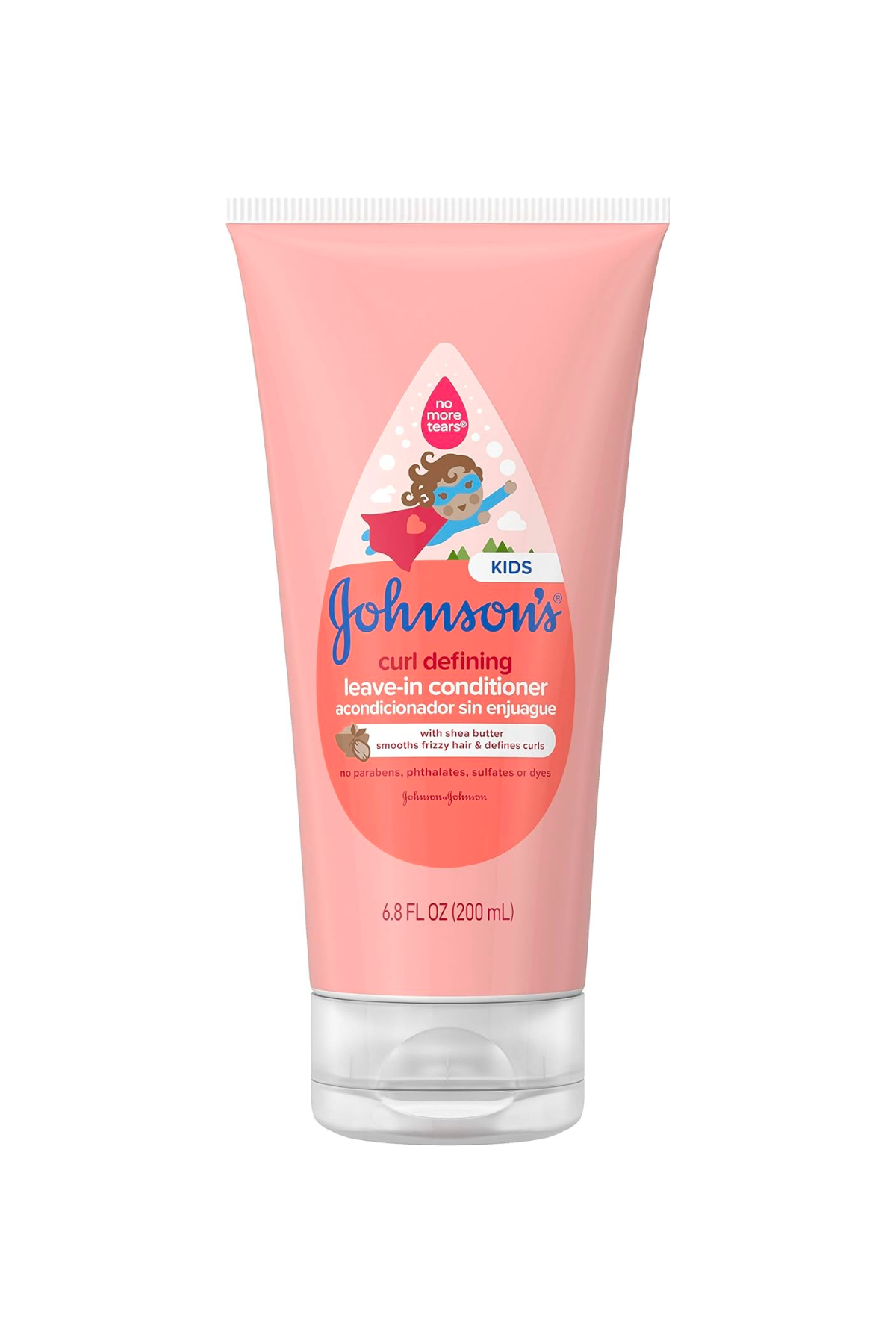
Did you know baby products can be used for anyone? This is amazing news if you're interested in Dior's baby skincare line...or just someone who likes to keep things extra gentle. Enriched with shea butter, Johnson's Tear-Free Kids' Leave-In is beloved by both young and old for its ability to offer moisture, tame frizz, and support curls. Oh baby.
Pros: Hypoallergenic; Softening
Cons: Less moisturizing than other options
Customer Review: "I was stunned when I sampled a little of my sister's bottle because it gave me moisture and not too much fuss. Sometimes I wonder why we stop using baby products as we grow and this made me ask that question again. I live in Colorado so my hair loves moisture and I will absolutely be buying this from now on." -Amazon
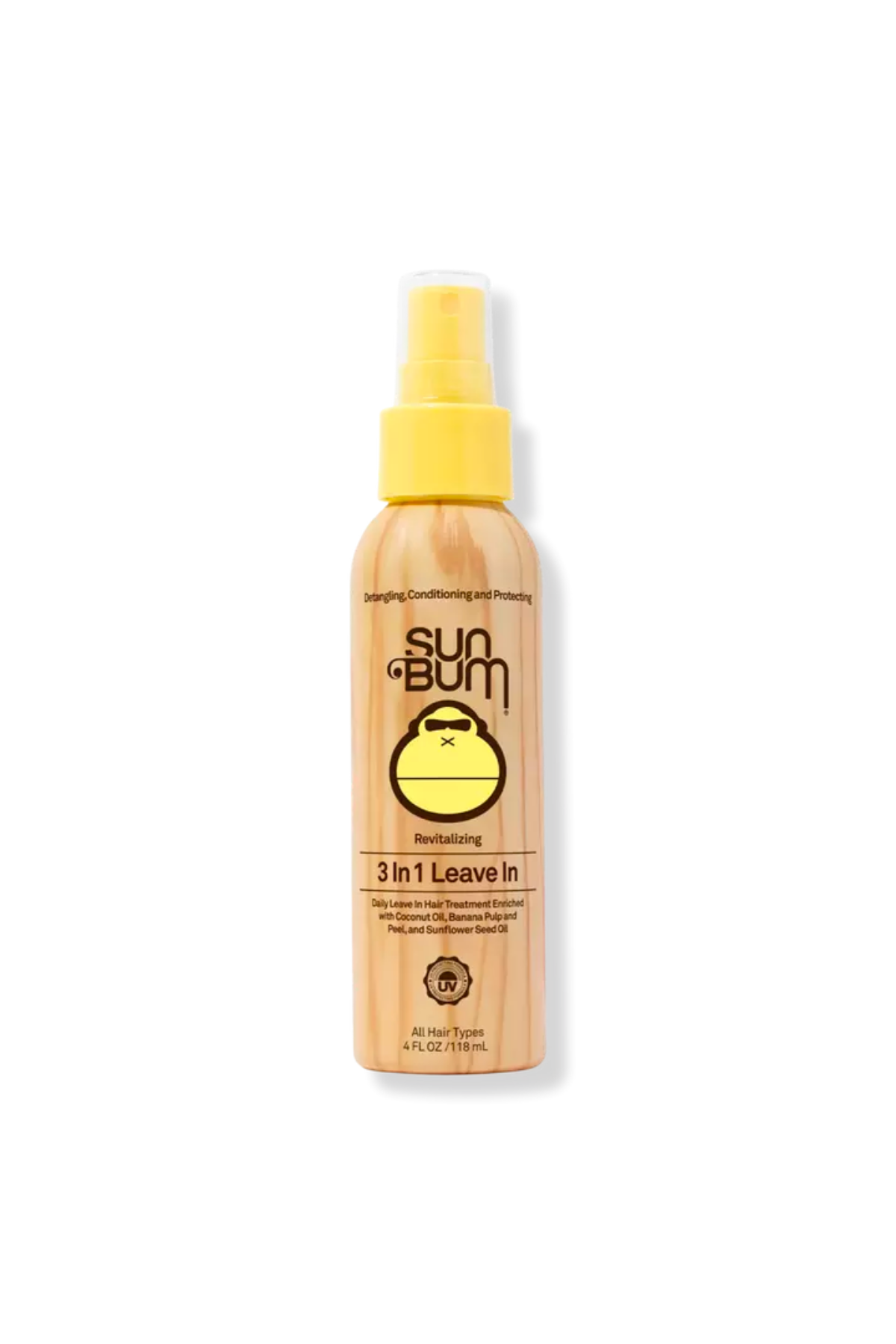
Boasting UV protection (this is beach-fave brand Sun Bum, after all), this 3-In-1 treatment was created to detangle, condition, and protect your hair from the harshness of the world around you in every season. Infused with moisturizing coconut oil and summery banana, this product is all about that summer feeling—a fun feature in the cold winter months when your hair needs moisture and you need a vacation.
Pros: UV protection; Softening
Cons: Heavily scented
Customer Review: "I have very long, blonde, easily dried and damaged hair with a million split ends. Sometimes my hair, even after conditioning with a great conditioner, still feels dry and brittle and is completely tangled out of the shower. Like tough to finger comb. A bit of this and I can use a fine toothed comb easily. It doesn't even weigh down my super fine super long hair and it makes it so shiny. I have even used this on unwashed hair that was wet with salty ocean water and sun dried with lots of snags, frizz and tangles. It magically makes it soft and manageable immediately. It is incredible, it smells fun and summery without being too strong, and it is just the best thing I've ever used. There are no words strong enough for how good this is on my hair." -Ulta
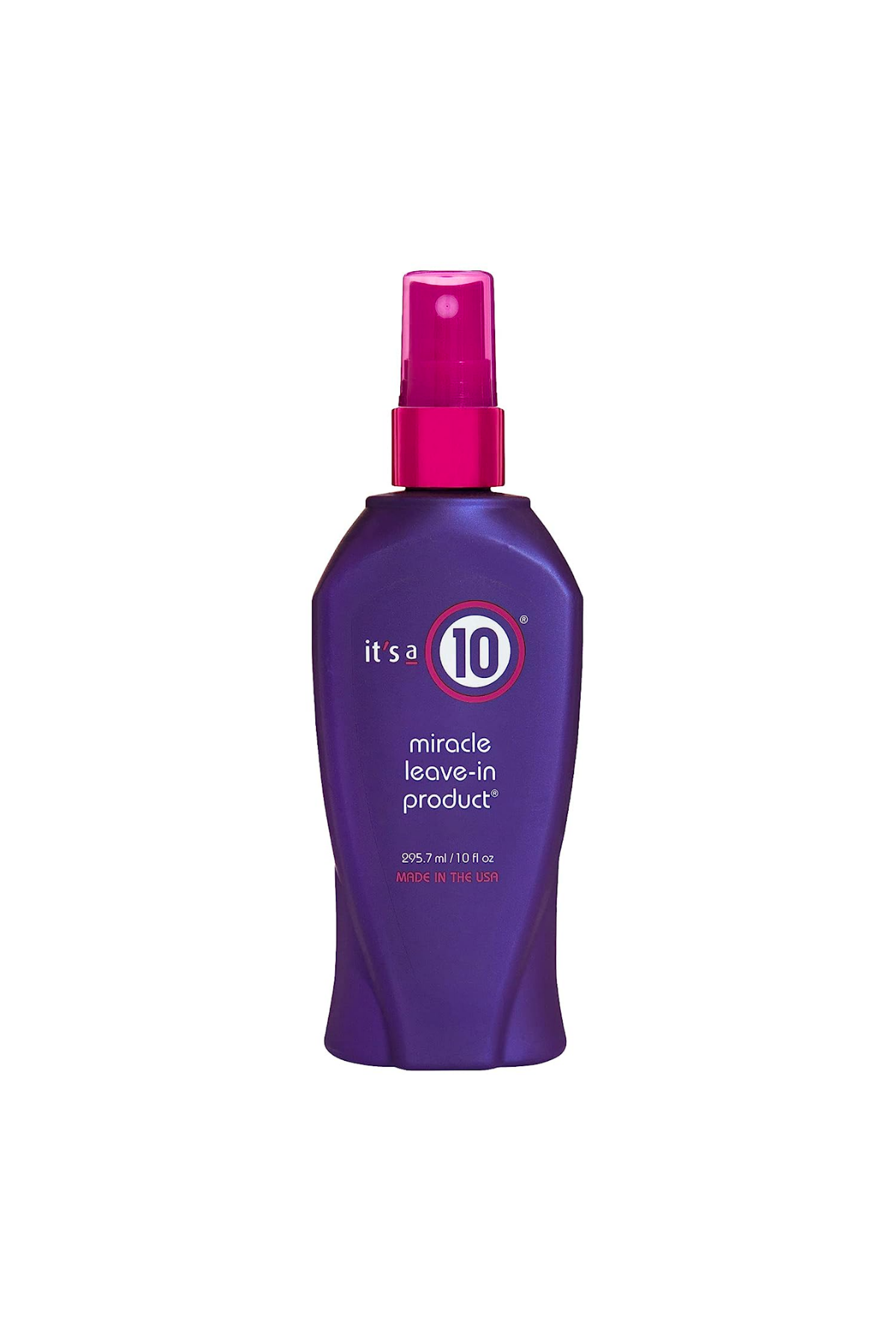
"This leave-in is a lifesaver for taming frizz, especially when I'm running out the door and don't have time for a long hair ritual or finicky styler. It comes in a spray bottle, making it ideal for applying the formula exactly where it needs to go, and because it's so lightweight, it never makes my hair crunchy or weighs down my curls. Apply it at the top of your head for frizz control or simply to revitalize a bit of volume, or on your mids and lengths to make dry hair look freshly washed again. And although the cream has a white color to it, the product never leaves white streaks or clumps in my hair."—Gabrielle Ulubay, Beauty Writer
Pros: Lightweight texture; tames frizz
Cons: Higher price point
Customer Review: "It's a 10 is indeed a 'miracle' leave-in conditioning spray. After every shampoo and conditioner shower I spray 8-10 shots of this in my long hair to keep it from knotting/tangling up and it does the trick every time without leaving any 'greasy' residue. My hair is always silky smoothe and tangle free. Been using It's A 10 for about 10 years now. Highly recommend it!!" -Amazon
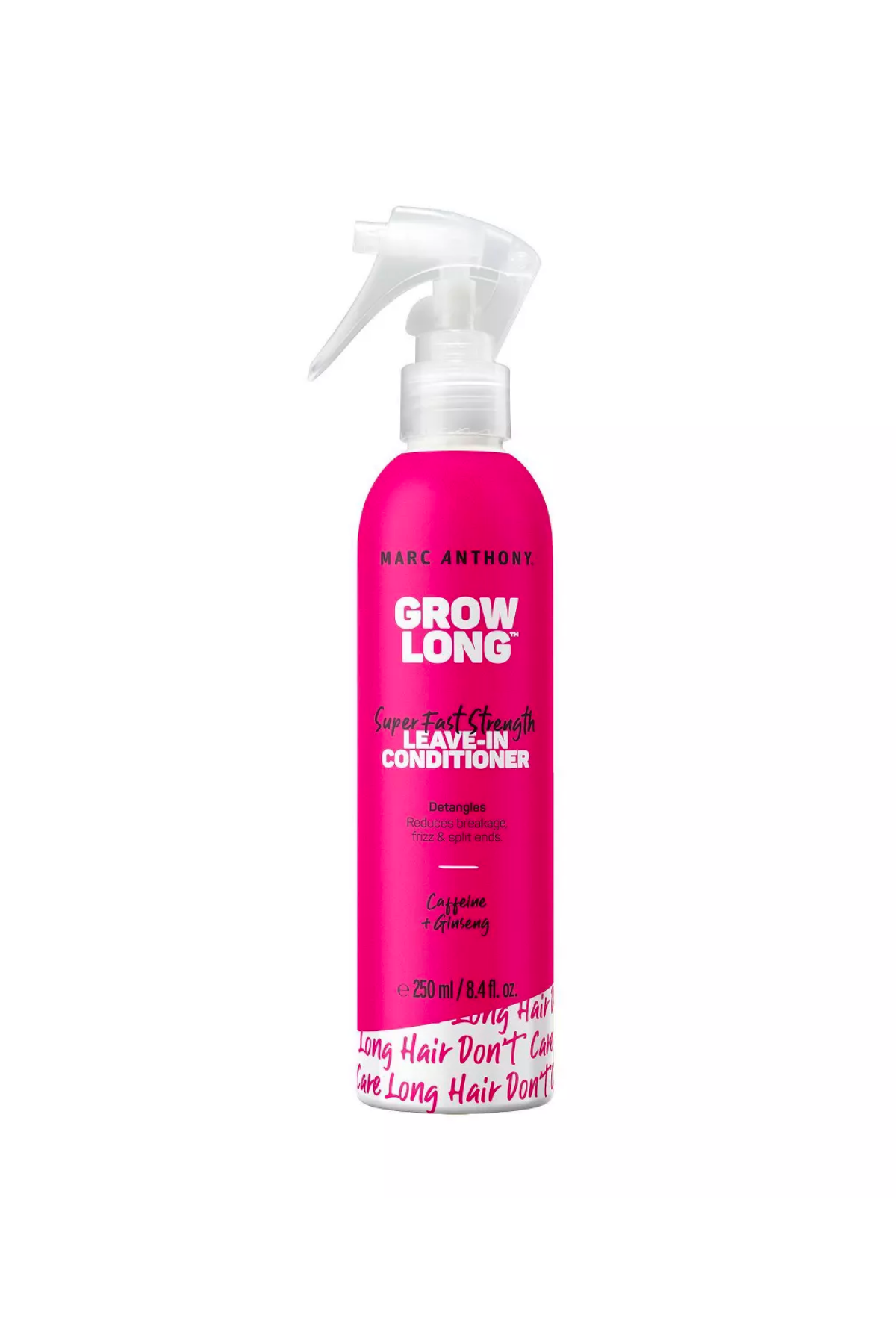
Formulated for all kinds of hair: curly or straight, natural or color-treated, Marc Anthony's Grow Long Biotin Leave-In Conditioner features caffeine, ginseng, and Vitamin E. As much a detangler as it is a leave-in conditioner (they're technically one in the same!), this spray makes it easier than ever to comb through your hair, helping prevent breakage and make your hair routine more manageable.
Pros: Easy to apply; Adds volume
Cons: Some say it feels heavy
Customer Review: "I love this spray! I have extremely fine hair, and a LOT of it. My hair is also about three feet long and takes forever to comb out everyday. I was having issues with my hair becoming horribly tangled while showering. I decided to give this detangler a try and fell in love right away.Brushing my hair has gone from taking 30-45 minutes down to 10 minutes as a result of this spray. The tangles in my hair are so much easier to get out when I am using this spray." -Amazon
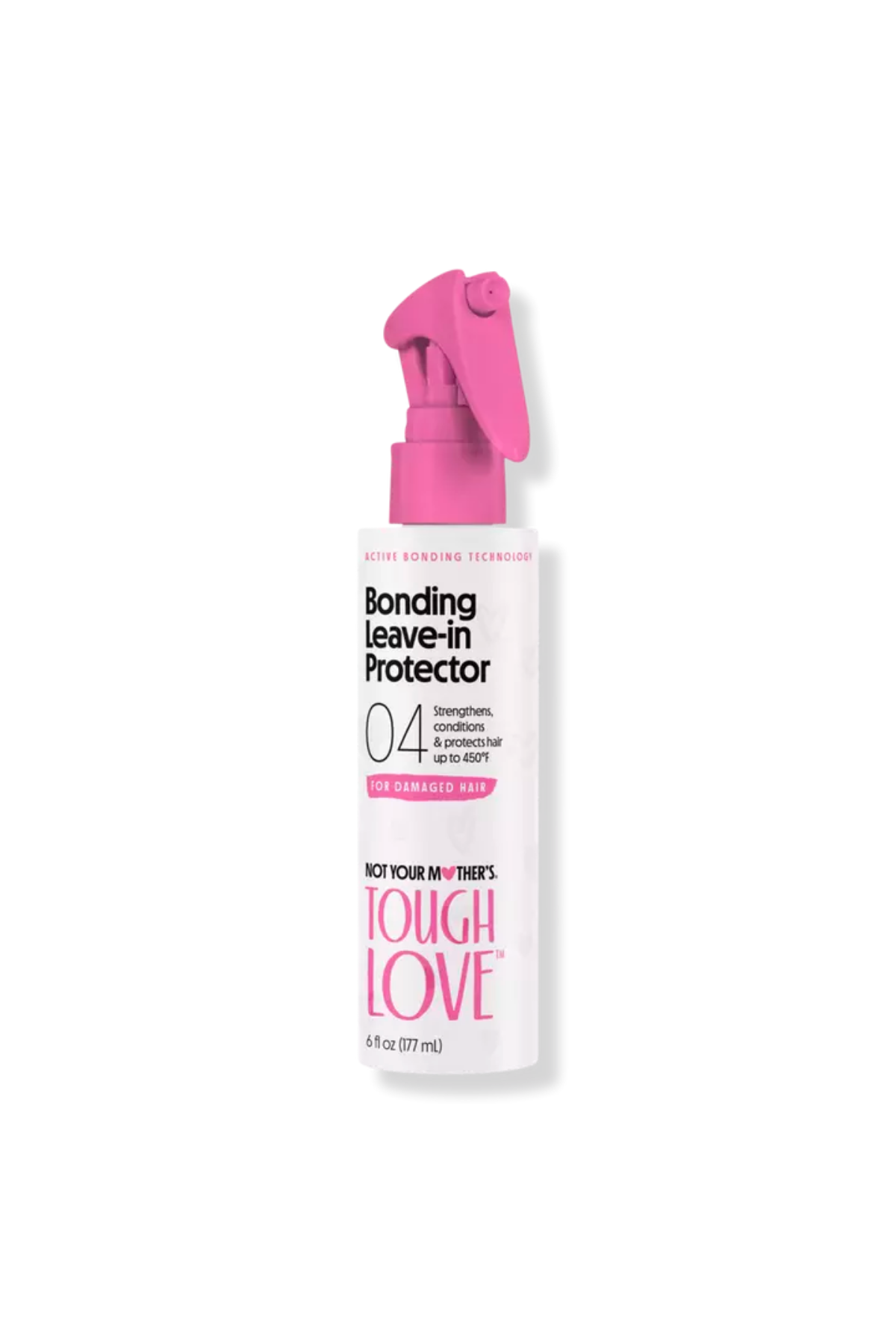
Made to be used post-wash, Not Your Mother's Tough Love Bonding Leave-In Protector was shown to protect against breakage by 67 percent in a clinical trial. While it contains all the benefits of a regular leave-in conditioner (moisture, detangling, you know the drill), it also protects hair against heat up to 450°F.
Pros: Great texture; Protects against heat
Cons: Heavily scented
Customer Review: "I really like this. I didn't expect it to be so smooth when spraying. A lot of my leave in conditioners are either too watery or too clumpy when coming out of the bottle and this has an amazing spray and feel." -Ulta

"This product is a bit laborious, but hear me out: When I started using this organic shea butter regularly, my curl pattern came to life more so than it ever has before. In fact, on bad hair days, I pull up a picture of myself after just having used this product and remark, 'This is what my hair is supposed to look like.' It's effective, lightweight, and doesn't have a strong fragrance or greasy finish. You can certainly whip it for a creamy finish, but I prefer melting it into an oil consistency. Simply spoon a bit of shea butter into a glass, heat-safe bowl (remember: a little goes a long way), pour boiling hot water into another larger bowl, and place your small bowl into the larger one. In minutes, the shea butter will melt into an oil that you can apply to your towel-dried hair."—Gabrielle Ulubay, Beauty Writer
Pros: Intensely hydrating
Cons: Finicky
Customer Review: "Such an amazing product. I warm it up and use it on my curly hair and body. Super hydrating and actually soaks in. When in a rush, sometime I use a blow dryer to heat it up. Works like a charm and super easy to use. Also smells delicious." -Amazon
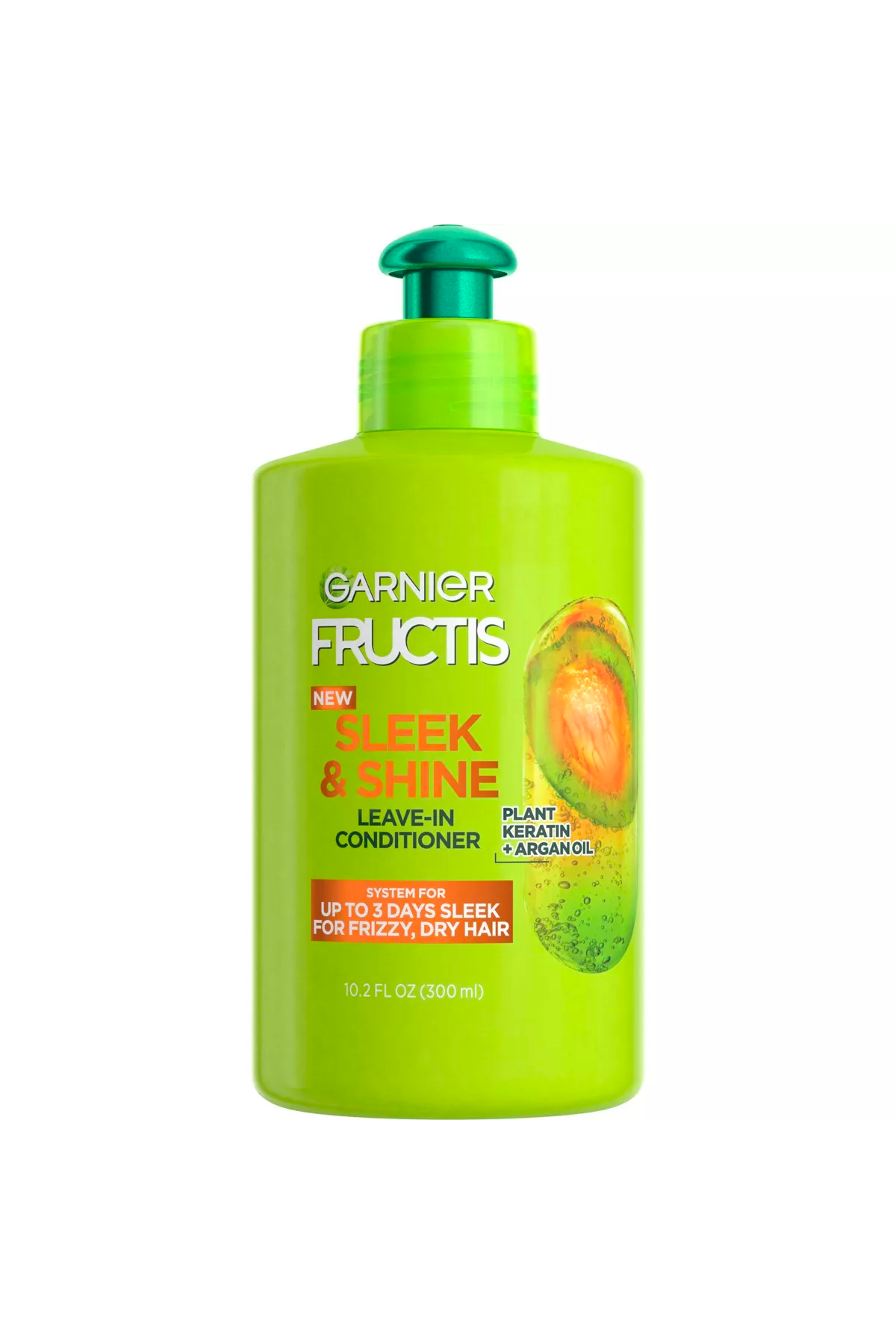
If I'm looking for long, healthy hair wisdom, I always turn toward Hill House Home's CEO and founder Nell Diamond, who swears by Garnier Fructis for her gorgeous locks. As part of the brand's shampoo, conditioner, and treatment system (you know these iconic green bottles, right?), this leave-in cream contains argan oil and is mega affordable and beloved by many.
Pros: Tames frizz; Softens hair
Cons: Might be too heavy for fine hair;
Customer Review: "I've been using Garnier Fructis for many years. My hair is 3 1/2 feet long and still growing, healthy, shiny thanks to your product. Loving it!" -Target
Who Should Use a Leave-In Conditioner?
If you don't think your hair was made for a leave-in, think again. Hairstylist Katelyn Ellsworth says that everyone with locks more than two to three inches long can benefit from the product.
"The hair is on the scalp for a long time. Years, in most cases. It's hard for the hydration from the scalp to reach those long ends and leave-in conditioner can do just that," she tells Marie Claire.
Still, different hair types need to go about their conditioning process differently. The best way to do this? Finding the right amount of product! If a leave-in conditioner "made for all hair types" sounds too good to be true, I understand. But good ingredients are good ingredients! Sometimes, it just depends on how you utilize them.
"For [Odele's] Leave-in Conditioner, it comes down to the amount you use. Use less if your hair is fine to medium and focus on the mids to ends. Use lots more if your hair is curly to coarse," shares Holden. "Our Leave-in Conditioner also has a balanced formulation—a.k.a. depending on your hair type, the amount used can work magic for every end of the spectrum of hair shape, thickness, and dryness levels. It’s formulated with amino acids that help improve hair health—better bounce, better movement, better shine."
Leave-In Conditioners vs. Regular Conditioners
Just because you have a favorite classic conditioner in your shower routine doesn't mean you don't also need a leave-in.
"Aside from the obvious fact that you don’t rinse it out, leave-in conditioner is also formulated differently from rinse-out conditioner. Rinse-out conditioners are designed to immediately restore any moisture lost from shampooing, so they’re typically made with heavier ingredients, like thick oils and creams. Left on long-term, these ingredients would weigh down the hair, which is why you rinse them out after a few minutes," shares Holden. "Leave-in conditioners, on the other hand, are formulated with lighter ingredients that coat strands without weighing them down or leaving heavy residue. That way, it can be left on your hair—and continue to nourish and protect it—until you’re ready to wash it out."
How to Apply Leave-In Conditioner
Taylor says you should apply your favorite leave-in conditioner to damp, towel-dried hair.
"When using a leave-in spray, aim for the mid to ends of the hair," she notes. "Alternatively, squeeze a dime-sized amount into your palm and rake through the mid to ends of the hair. If you have thicker or longer hair, feel free to adjust the amount! Once you have applied the product, use a wide tooth comb to disperse the product throughout your hair."
If you have a thicker or curlier texture, you can add more product to tame frizz and flyaways once your hair is dry and styled.
And if your hair is fine or oily?
"The best part about a good leave-in conditioner is it adds moisture to your hair without feeling heavy or greasy. If you have fine or oily hair and are nervous to use any products in your hair after showering, consider starting with a leave-in conditioner," adds Hayes. "Always focus the product on the mids to ends of your hair—never spray it directly on the roots."
Leave-In Conditioner Hairstyles
Lucky for hair treatment devotees, we live in a world absolutely flush with slicked-back hairstyles. Even luckier? While the look is great with a leave-in conditioner, it's not your only styling option. In fact, using a leave-in is the perfect prep step for any hairstyle.
"Leave-in conditioners truly have so many applications! They are used often in editorial and celebrity hairstyling to create sleek styles, avant-garde shapes, wet-hair looks, and more!" shares Hayes. "For day-to-day, one of my favorite looks to create with it is a slicked-back bun. Spray your leave-in conditioner around your hairline and part line, then add a smoothing cream. Use an edge brush to pull the hair back tight and smooth, then tie your bun. I find this works best on hair that hasn’t been washed in a few days."
Leave-ins also offer a great refreshment for curly girls' natural texture.
"You could also use Leave-in Conditioner between washes, to rehydrate and extend your style," adds Holden. "Simply slick a few pumps through your [dry] strands to smooth down frizz and flyaways, or scrunch it into your curls for a little extra bounce and definition."
Meet the Experts
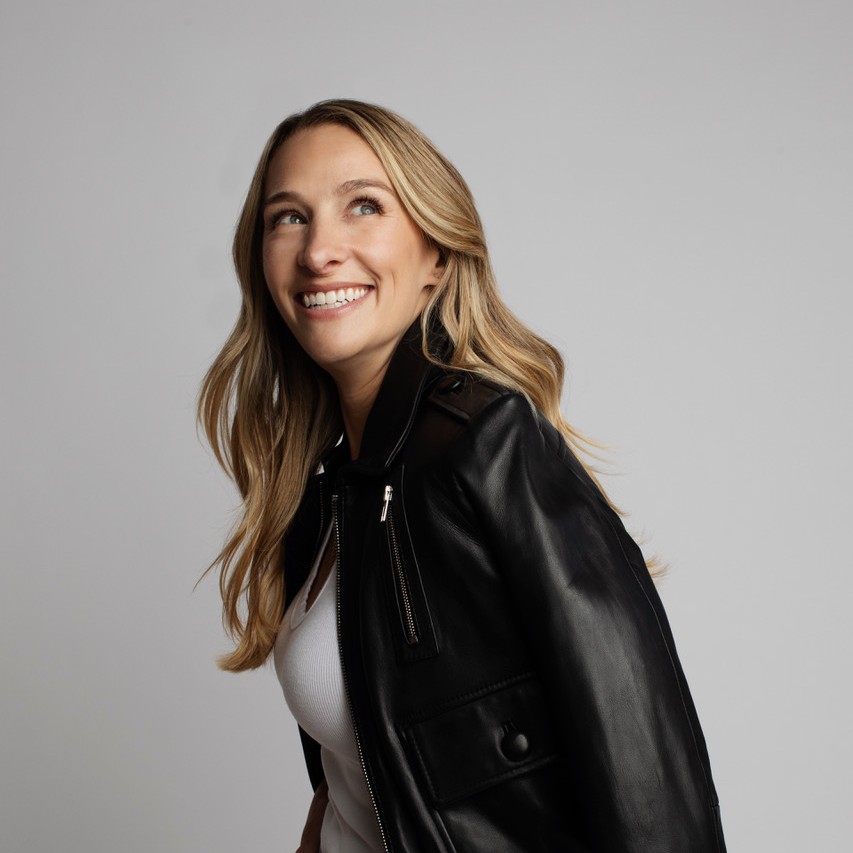
Lindsay is a retail professional and sales savant, with over 20 years of experience, including eight years serving as a Senior Buyer for Target corporation. She’s led multiple cross functional teams to develop merchandising strategy, product development, promotional strategy, forecast through the complexities of diverse businesses and run P&Ls across both brick and mortar and online businesses. She’s the ultimate connecter of people, community builder, value maximizer and sales driver. Minnesota born and bred, Lindsay, her husband Blake and their three kids call Minneapolis home.
Along with Lindsay’s co-founders, Britta Chatterjee and Shannon Kearney, Odele (the brand is name is a riff on the Norwegian phrase "å dele" which means “to share”) launched to disrupt retailer shelves with a product that spoke to the need the co-founders saw on the market for an all-inclusive, gender-neutral salon-grade haircare line that was safe for all who share your shower…and disrupt retailer shelves, they did. Odele reached profitability within their first six months of business; they kicked off their official giving program in June 2020, with a $10,000 donation and a 10,000 bottle pledge to organizations fighting racial injustice and helping underserved communities (that program, called Odele Gives, has evolved so that Odele donates 5% of pretax profits to organizations that support underserved communities); they expanded from hair care down to shoulders, knees + toes with body wash in Summer 2021.

Annagjid (Ahh-nah-key) Taylor, also known as “Kee” who got her start in her Mom and Dad's basement is now a CEO, author, Editor in Chief, salon owner, and hairstylist, not only in her own salon but in the entertainment industry as well. Traveling from coast to coast, she styles hair for her well-known celebrity clients.
Kee's hair salon ‘Deeper Than Hair’ is based in West Philadelphia and just celebrated 10 years in business. Her salon is most known for their attention to the health of the client’s hair and getting damaged hair to its strongest state. Because of her dedication to caring for the health of her client's hair and feeling like something was missing from the industry, Kee was inspired to create an advanced hair care line, ‘Shear Genius Collection’. She also has taken initiative to build up the youth with her children's book, All Hair is Good Hair, which is available at Barnes and Noble and Amazon.

Kerry E. Yates is a trichologist and founder of Colour Collective, an incubator for new beauty concepts, products, and trends.

Katelyn Ellsworth is founder of The Roslyn salon, a natural color and extension specialist, and San Diego's Style Icon.
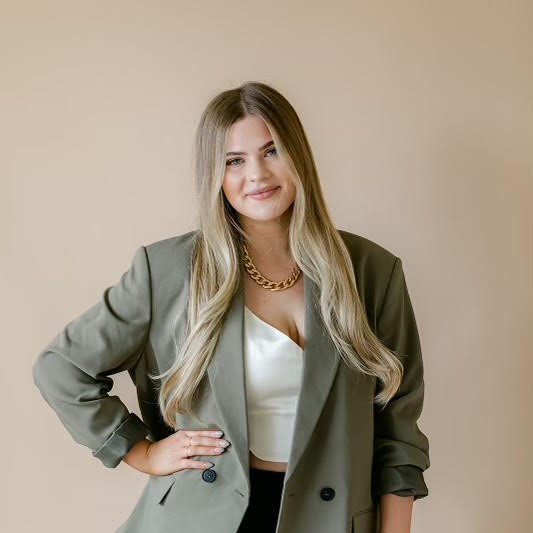
Christina Hayes is a senior hair designer at Hainsworth & Company Salon in Scottsdale, Arizona. She has been in the hair industry since 2016, specializing in women’s hair extensions, coloring, cutting, and styling.
Get exclusive access to fashion and beauty trends, hot-off-the-press celebrity news, and more.
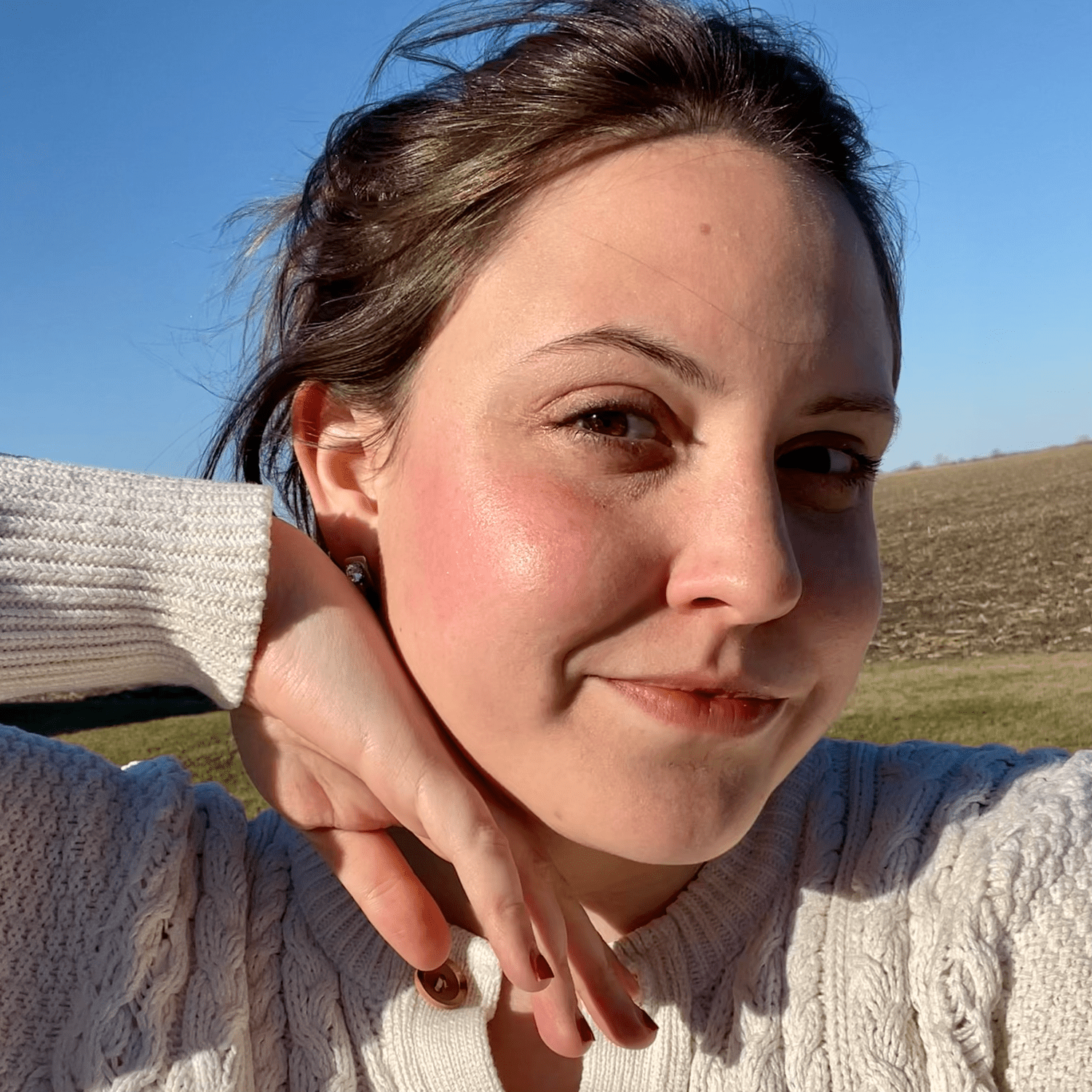
Sophia Vilensky is a Freelance Beauty Writer at Marie Claire with a beauty, wellness, and entertainment journalism portfolio that includes contributions to Byrdie, Bravo, Teen Vogue, and Us Weekly. Growing up in a family of beauticians—and through her own personal studies—she developed an in-depth understanding of aesthetics, cosmetic product formulation, and beauty treatment development and has also held roles as a senior copywriter, content strategist, and proofreader for top beauty and wellness brands. Even so, you'd be hard pressed to find her with her hair and makeup actually done. Sophia is based in Minneapolis and is a 2019 graduate of the University of Minnesota, where she majored in English and minored in cinema studies. During her time at the university, she was the Arts & Entertainment Editor for the Minnesota Daily, earning the 2019 Editor of the Year award for her work. She connected deeply with the Twin Cities arts scene, collaborating with leading beauty professionals, designers, and artists. Graduating Summa Cum Laude, her thesis—a close-reading of Vanderpump Rules—was featured on NPR. When not immersed in writing or testing new products, Sophia enjoys watching reality TV, reading, and exploring the newest woo-woo wellness trends. Keep up with her on Instagram @sophiavilensky.